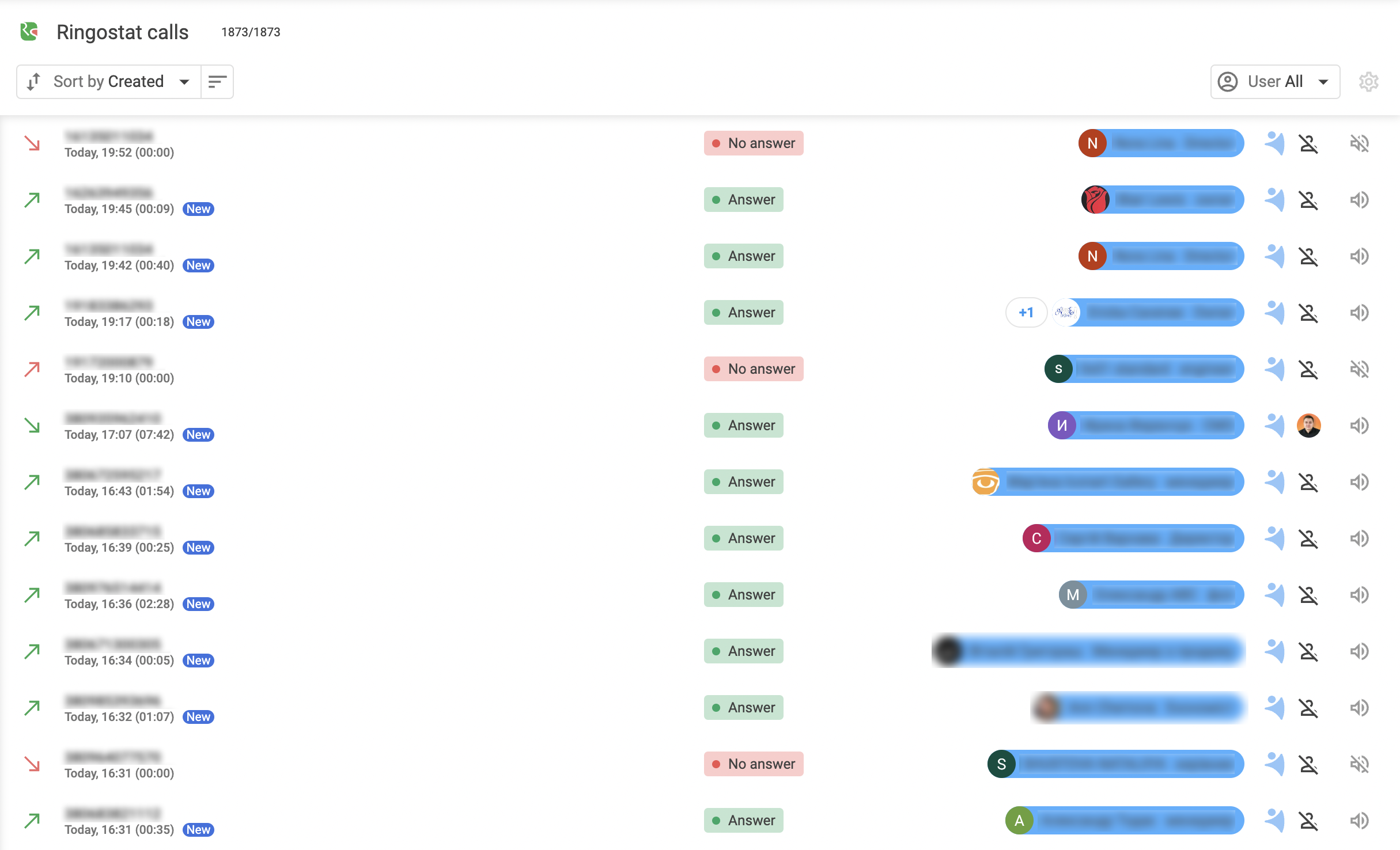
Shane Barker is a digital marketing consultant specializing in influencer marketing, content marketing, and SEO. He’s also the co-founder and CEO of Content Solutions, a digital marketing agency. He's consulted with Fortune 500 companies, influencers with digital products, and several A-List celebrities.
According to a study by Salesforce, 92% of all customer interactions happen over the phone. Did you know that?
Nothing beats one-on-one sales calls with your prospect because these interactions provide valuable insight into the customer's world.
These two-way conversations allow you to understand and empathise with the prospect's pain points and make stronger connections. As a result, many businesses are starting to record sales calls to capture these insightful interactions to capitalise on this.
In this article, we'll discuss how recording sales calls helps businesses optimise their sales processes and improve other areas of their operations. Once we cover the benefits of this technique, we'll provide the steps to record your sales calls.
Why record sales calls?
Sales calls make it possible to get more information from your leads since this method of communication offers more personalised interactions than VSLs, emails, and cold pitches.
Recording sales calls becomes a no-brainer when you recognise what a goldmine of information comes with these one-on-one interactions. Whether optimising your scripted prompts or observing the information the prospect naturally shares, there’s much to learn.
After all, it’s nearly impossible to pick up on someone’s tone through an email. That’s why phone conversations are so valuable to sales teams worldwide.
There are several reasons you should consider recording your sales calls:
- Training and quality control: Recording sales calls allows managers to listen in on conversations and provide feedback to sales reps on improving their performance. It also allows new representatives to listen to calls and learn the best practices.
- Compliance: Some industries are regulated and require companies to record calls for compliance purposes.
- Referencing: Recording sales calls can be helpful for both the salesperson and the customer. It allows the salesperson to refer to the conversation if there’s confusion and verify promises made. It also allows the customer to refer to the conversation to ensure the company keeps its promises.
- Dispute resolution: Either party may use a recorded call as evidence of any disputes arising after a sale.
- Research and analysis: Recording sales calls can be an excellent way to gain insight into customer behaviour, preferences, and buying patterns. Use this data to improve sales strategies and increase revenue.
By documenting your sales calls in this fashion, the wealth of knowledge can extend beyond a couple of people on the call.
Recorded interactions can be shared with your team so that you can all analyse and reference them for whatever use cases you choose.
6 ways to use sales call recordings
The primary purpose of recording sales calls may be to document valuable interactions with potential customers. Still, these recordings are helpful throughout your various business operations.
Let's review six ways you can use sales call recordings in your business.
1. Optimise messaging and presentation
One important use case for a sales call recording is to observe the flow and content of a call so that you and your team can optimise messaging and presentation.
When you listen back on sales call recordings, you can observe which points landed with the prospect and which didn't.
Here's an example of how a company might use sales call recordings to optimise sales messaging:
Customer: "Yes, I'm interested in your new XYZ product, but I'm concerned about the price. It seems a bit high compared to other similar products on the market."
Salesperson: "I understand your concern. Our product is a bit more expensive than others, but it’s made with higher-quality materials and a longer warranty. It's also more durable and energy-efficient, saving you money in the long run."
Customer: "I see. That does make sense. Can you tell me more about the warranty?"
Salesperson: "Of course. The warranty is for five years, which is double the industry standard. It covers all defects in materials and workmanship and any issues that may arise due to regular use."
Customer: "That sounds good. I think I'll go ahead and place an order."
By listening to this call, the company might notice that the salesperson's use of specific words, such as "durable" and "energy-efficient," in this case, resonated with the customer and led to the sale.
The company might then incorporate those words and phrases into its sales scripts and messaging to increase the effectiveness of its sales pitches.
Of course, this is an example of a successful conversion. Listening back to sales call recordings can also help you identify common mistakes you and your teammates are making. You can gauge the errors by the reactions and behaviour of the prospect on the other end of the call.
For example, you may notice that people's attention tends to drop off after a specific line of the sales call script. Or you may see that a particular phrase or term doesn't land with your prospects.
Reviewing these recordings helps you identify these mistakes, so you can correct them to improve your sales process and boost conversion rates.
2. Build a stronger relationship with your lead
Let’s face it, sales calls aren’t a walk in the park. When speaking with leads, it’s easy to feel overwhelmed by the many aspects of the conversation.
The need to ask relevant questions, identify concerns, and present the benefits of your product or service, can cause important information from your lead to slip through the cracks.
Recording your sales calls allows your salespeople to pick up customer details they might have missed without asking customers to repeat themselves. As a result, the salesperson comes across as an attentive, engaged listener.
If the salesperson commits to follow up with the lead at a certain time or provide more information, they can refer to the recorded call to make sure they followed through.
These simple efforts build trust with the lead by showing that the salesperson is reliable, dependable, and cares about solving their pain points.
3. Gather materials for training
Another great way to use sales call recordings is for team coaching. You can use positive and negative examples to help guide your trainees as they learn how to handle sales calls like a pro.
For example, if your business offers financial services, you can use prior client conversations to improve future client interactions and boost account opening rates.
Sales doesn't have a one-size-fits-all approach, so these recordings are a good training opportunity for your team. For example, they can learn how to sell financial tools that teach teenagers how to invest.
Here are a few ways you can use sale call recordings as training material:
- Identify best practices: Listen to successful sales calls with the best close rates and identify the techniques and strategies that contributed to the success of the call. Doing this can help sales team members learn what works and doesn't in upselling investment services.
- Role play: Use call recordings as the basis for role-playing exercises. Sales team members can practice their sales pitch and techniques by pretending to be the salesperson on the call while another team member plays the role of the client looking to learn more about investing in stocks and options.
- Build a knowledge base: Create training materials based on the content of successful sales calls, like a written summary of the call, a video highlighting key points, or a presentation featuring quotes from the call.
4. Capture genuine responses from customers
There are several uses for quotes from customers in business. You can use them internally for planning purposes, or you can use them publicly for marketing and branding purposes.

Sales calls are a great place to capture genuine responses from customers. Don’t worry about testimonials, there are lots of ways to acquire them.
Instead, pay attention to the knee-jerk reactions to what you offer and learn to overcome common sales objections.
Some common sales objections include:
- "I don't have the budget for this."
- "I'm not interested."
- "I'm happy with my current provider."
- "I need to think about it."
- "I need to check with my boss/team first."
To be prepared to handle these objections, your sales team members can listen to customer responses and learn how to respond to the customer's concerns and objections by highlighting your product or service's value.

For instance, try sharing customer success stories, offering discounts or other incentives, or demonstrating how your product or service can solve specific customer pain points.
These sound bites are also valuable for developing a deeper understanding of your ideal customer voice. Equipped with this information, you can build your brand's voice to resonate with your prospects better.
5. Brainstorm new business ideas and find new ways to improve the quality of your product
Many of your best business ideas have likely come from informal chats between colleagues or conversations with clients.
The ability to record sales conversations allows you to revisit these conversations to understand better what your customers need. Additionally, these recordings can provide more inspiration and ideas for you and your team.
Sometimes, the effectiveness of a sales call has less to do with the sales presentation and more with your offer. Your sales presentation could be perfect, but you'll never close the deal if your offer isn't right. If this comes to light, it could also spur new business ideas.
There’s a time and a place for new business ideas, but you don’t always have to reinvent the wheel.
Reviewing conversations with your customers is a surefire way to understand where your product is falling short and where there are opportunities to improve.
There are several key indicators you should keep an eye out for:
- Common customer complaints
- Misunderstandings or misconceptions
- Difficulty in using the product
- Product features that aren’t well understood
- Competitive products and missing features
This feedback is worth its weight in gold. Improving your products helps turn first-time buyers into loyal customers, improves your brand reputation, and boosts your bottom line. It’s a win-win-win.
6. Enhance the entire sales process
It's worth noting that the sales process doesn't occur only during the call but also includes previous steps.
These steps could include filling out a form that asks for information about the lead interested in hiring your services or products beforehand.
For example, HelloRache, a virtual scribe services provider, has a "Book a call" CTA on their website, which directs the prospect to fill out a form. Their sales team can view this form to get more context before they get into the call. This way, they have background information and can provide a better service to the prospect.

When you review the recording of a sales call, you can assess how relevant the other steps of your sales process are. Access to that recording is valuable as you document your entire sales process since it allows you to observe the bigger picture.
How to record sales calls: A step-by-step instruction and best practices
Now that you're more familiar with how you can use a sales call recording, let's dive into the step-by-step process for sales call recording.
1. Choose a sales call recording tool
The first step is to find a tool for recording your sales calls.
We encourage you to look for integrations and add-ons within your current tech stack. For example, NetHunt is a CRM for sales and marketing teams. However, NetHunt's Ringostat integration makes recording and storing sales calls even easier.

Investing in a sales CRM with telephony integration is worth its weight in gold because...
- You can see the effect calls have on your sales pipeline and promptly listen back to the exact call that caused a change.
- You get access to the whole communication history, so you won't lose important details like: which team member accepted a call, who the customer was, how long the call lasted, and when and where the call occurred.
- You can call your customers directly from the CRM to streamline the sales process.
Give NetHunt CRM a try now — the first 14 days are on us 👀
Some other popular call recording tools include:
- Talkdesk
- ULTATEL
- Dialpad
- CallShaper
- Wingman
Each tool has slightly different functionalities, so review them thoroughly to ensure that your chosen sales call recording tool is suitable for your needs.
2. Understand local consent laws
Although many businesses see the value in recording sales calls, some have concerns about the legality. Luckily, recording calls is perfectly legal with proper consent.
In the United States, consent laws vary by state. Some states require both parties to consent, and some only need one. We encourage you to look into the laws in your jurisdiction to ensure you're doing things legally.
A salesperson can use a few examples to ask for a lead's consent to record the call:
💬 "Do you mind if I record this call for quality assurance and training purposes?"
💬 "I'd like to ask for your permission to record this call so we can refer back to it if needed. Is that okay with you?"
💬 "We like to record our sales calls for training and compliance purposes. Is that alright with you?"
💬 "To provide the best possible service today, do you mind if we record this conversation?”
3. Record the call
Once you've made sure you have the necessary consent, it's time to record your sales call. This process step looks slightly different, depending on your chosen call recording tool.
Typically, this is as easy as clicking a button within your call recording software. Review the documentation for your chosen software to learn more.
4. Leverage ELT
Extract, Load, and Transform (ELT) is a process that aims to convert raw data into data sets of different formats that data analysts can use to derive insights that drive business decisions.
With ELT, you can pull useful information from your sales call recordings. This process will help you categorise and classify your data in a way that's easier to understand.
5. Analyse and use the data
Once you've pulled the data with ELT, it's time to analyse it.
Thankfully, you don’t have to manually scrub the data because the ELT process does that for you. You’re left with beautiful data sets to help you make quick business decisions.
Here are several key metrics to pay attention to when looking for insights into your sales process. Some examples of these metrics include:
- Call duration: The length of the call. Longer calls may indicate that the salesperson is taking too long to make the pitch, while shorter calls may indicate that the salesperson is not providing enough information or not qualifying the lead properly.
- Closing ratio: The percentage of calls that result in a sale. The higher the closing ratio, the better.
- Average deal size: The average value of a sale. Keep track of this metric to identify which products or services are the most profitable.
- Lead conversion rate: The percentage of converted leads into paying customers. It can help to identify which leads are the most likely to convert and prioritize those leads for follow-up conversations.
Through analysis of these metrics, you can identify areas for improvement.
For example, if a sales call lasts 45 minutes but results in a failed conversion while another call converts after 10 minutes, there's a sign that longer calls start to lose customer engagement.
If data analysis isn’t your strong suit and you prefer a one-stop-shop solution, look for integrations with your existing CRM to do the heavy lifting for you.
For instance, the NetHunt Stream Telecom integration shares valuable insight into each call's effect on the deal's progression down the sales pipeline. Everything is tied up in a nice, neat bow.
Then you can share these detailed reports with others in your organisation to move forward with implementing changes to improve your sales process and close more deals.
Wrapping up
Sales call recording is an excellent technique for improving your sales process and enhancing other areas of your business.
Luckily, the process is pretty simple, so you can capture plenty of valuable information with a bit of preparation.
How will you use sales call recording to improve your business?
Table of Contents
Crack the sales formula with CRM Lab
Twice a month, receive actionable CRM content to your inbox.


